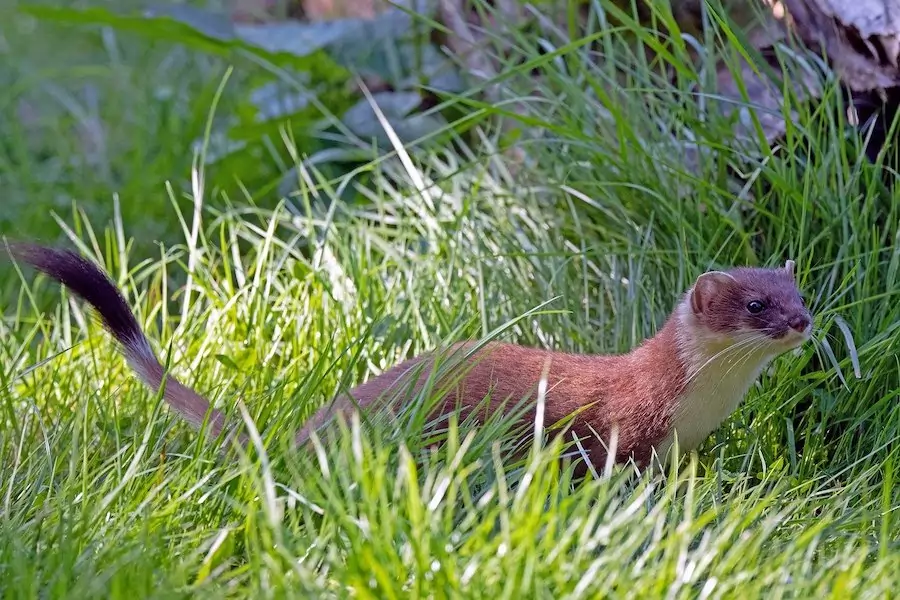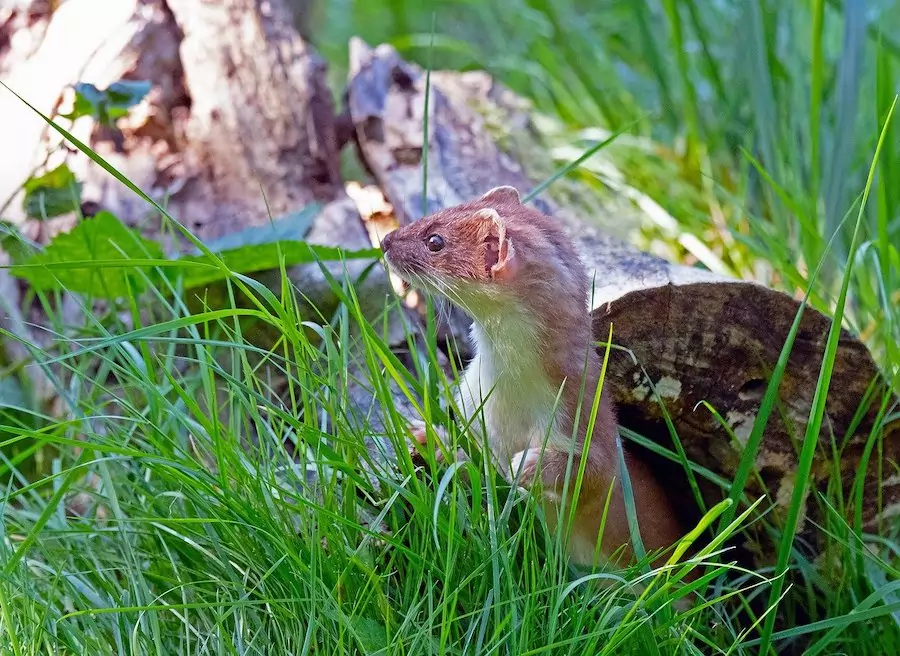In this article, we’re answering the question of what do stoats eat. You don’t see stoats that often, but if you manage to gain a fleeting glance at a stoat then you may be wondering if they’re looking for something to eat and what that might be.
Here’s the quick summary answer, then we’ll get into more details…
Generally, small rodents form a staple part of a stoat’s diet. Including mice, rabbits, and voles. They will hunt small mammals, amphibians, birds, birds eggs, reptiles, and insects. Most small animals are fair game for a stoat’s diet. They may also steal food from other animals, or scavenge.
Stoats (Mustela Erminea), are carnivorous animals, which means they predominantly eat meat.
How stoats hunt
Stoats commonly hunt and are active during both the day and night. They’re easiest to observe in open habitat areas, such as grasslands, sand dunes, and heathland.
They will patrol and track through a common well-known territory looking for recent signs of prey activity and opportunistic kills.
They inhabit many areas such as woodlands, hedgerows, farmland, grassland, wetlands, semi-urban, and rural areas.
Stoats can also be found in human-altered habitats such as orchards, gardens, parks, and towns.

The stoat’s diet
The stoat is a carnivore and its diet consists mainly of small mammals such as rabbits, hares, rodents, birds and their eggs, frogs, and fish.
Stoats also scavenge dead animals for food. This helps keep the environment clean and provides them with the nutrients they need.
Let’s get more into what animals are in a stoats diet…
What do stoats eat?
Here are the types of small animals and mammals stoats will hunt, listed below.
1. Rabbits
2. Hares
3. Mice
4. Rats
5. Voles
6. Shrews
7. Hedgehogs
8. Weasels
9. Squirrels
10. Small Fowl
11. Birds
12. Birds eggs
13. Frogs
14. Fish
15. Newts
16. Small snakes
17. Earthworms
18. Insects
And here’s where you can find out what else eats rabbits!
Why stoats hunt these animals
Stoats are much like the mink when it comes to being predatory. They can be vicious and are fast, fighting machines that will often take on prey five times larger than themselves.
You can find out what minks eat here.
Each of the prey items on the list has certain qualities that make it an appealing target for a stoat.
For example; prey such as rabbits is both fast and agile, making them harder to catch. But they also have a high-fat diet, providing the stoat with plenty of energy so it’s worth the effort as the rewards are great.
Rabbits are the most common prey for stoats, and they can eat up to a third of their own body weight in a day.
Stoat diet through the seasons
The stoat’s diet changes with the seasons as different prey become available at different times.
In spring and summer, stoats will eat mainly small mammals such as rabbits, voles, and shrews.
During fall, they will add birds to their diet, especially ground-nesting birds like the ptarmigan and meadow pipit.
In winter, when food is scarcer, they will dig for insects, or seek out amphibians, reptiles, and even other small predators like weasels and foxes. In the winter they will also more commonly scavenge from carcasses.
So we’ll now go on to where stoats mainly find their food.
Where stoats find their food
Stoats hunt for food both on the ground and in trees. They find their food by hunting within a general local territory for prey, and by scavenging.
The diet of the stoat is determined by what is available in its environment. A stoat living in woodlands will mainly eat small mammals, while those living in the open countryside will eat more small birds.
Stoats have a sharp sense of smell which they use to locate prey, and they also hunt by sight. They are agile climbers and can catch prey in trees.
In addition, they mainly rely on their sense of smell to find prey, but they can also see well in daylight and darkness.
Stoats will also scavenge from kills made by other predators.

Let’s look into how stoats get their prey!
How stoats catch prey
Stoats can run fast for their size, are very nimble over difficult terrain, and their combination of sharp teeth and claws helps them quickly despatch prey once they get a hold of it.
Targetting wise, they usually kill their prey by aiming for and biting them on the back of the neck. Stoats have powerful jaws, sharp teeth, and their reactions are quick. They often pursue and catch prey as it flees.
But what about those with livestock such as chickens? Are stoats likely to attack those too?
Do stoats kill chickens?
Like foxes and minks, stoats will conduct surplus killing. This is where an animal kills more than what it needs for food. Similarly, stoats have been known to kill chickens, however, this is not as common. The main prey for stoats is small rodents, rabbits, and hares.
Here’s what foxes eat.
Do Stoats eat berries and other fruit?
Stoats are predators who prey on rabbits, small rodents, mice, rats, birds, and their eggs, insects, reptiles, and amphibians. You might see them eating berries on a rare occasion as they will resort to other food such as berries and fruits when they are unable to catch the prey.
Finally, let’s discuss how aggressive stoats are.
Are stoats aggressive?
Stoats are predatorial creatures and as such, they are aggressive by nature. They will fight for what they want and need, including food. Sometimes they will attack prey much larger than themselves, but other times they will scavenge for food or steal from other predators.
When attacking prey, stoats are fast and will use their sharp teeth and claws to kill or disable the animal, usually by targeting the neck area.
What do stoats eat – Even more wildlife help
We hope this has helped you in answering the question “what do stoats eat”? And moreover, has provided some additional stoat diet information.
Be sure to check out our other articles on Ranger Planet.com on a wealth of other wildlife topics. And check out our Ranger Planet YouTube Channel.
